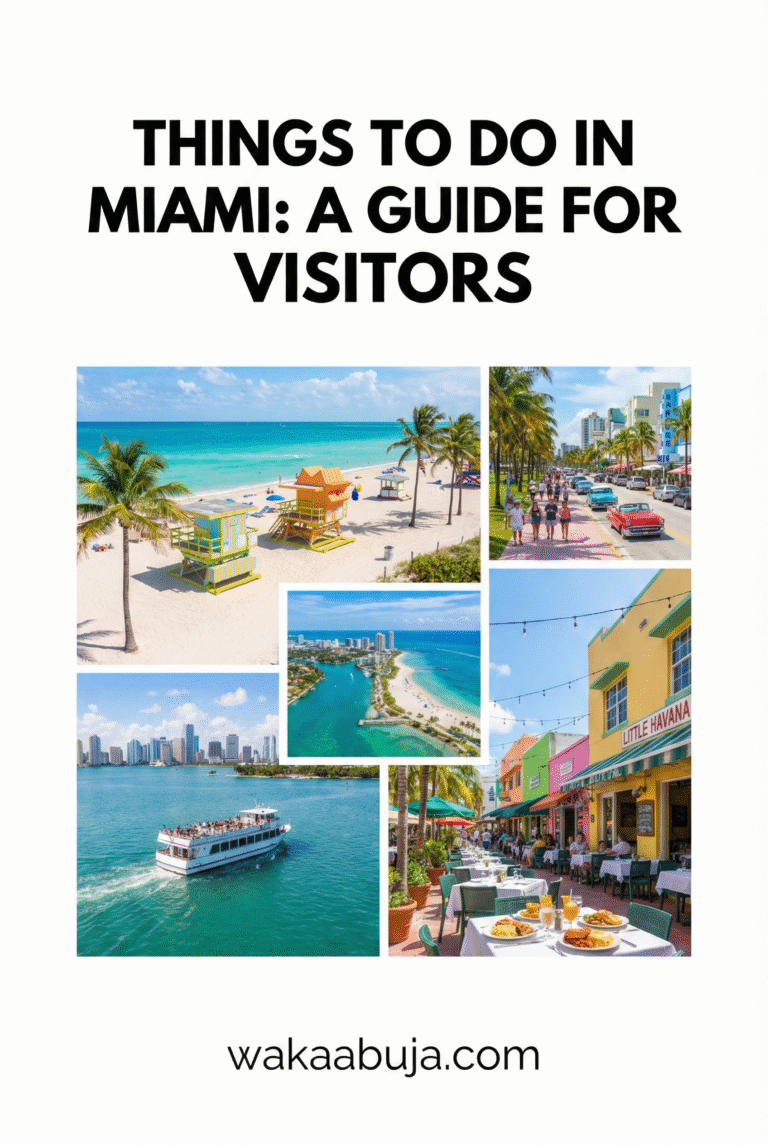TL;DR
Hoi An, Vietnam’s UNESCO-listed Ancient Town, is a captivating blend of history, culture, and natural beauty.
From wandering its lantern-lit streets and historic bridges to savoring authentic Vietnamese cuisine and relaxing on pristine beaches, this guide covers everything you need to know: where to stay, how to get around, the best times to visit, typical costs, safety tips, and must-do tours.
Whether you’re a first-timer or returning traveler, my personal insights and pro tips will help you experience Hoi An like a local and make the most of your trip.
Welcome to Hoi An: Vietnam’s Timeless Ancient Town
Hoi An is not just a destination; it’s a living museum of Vietnamese culture and history. Nestled on the central coast of Vietnam in Quang Nam Province, this charming city is famed for its remarkably well-preserved Ancient Town, a UNESCO World Heritage Site since 1998. Walking through its narrow alleys lined with centuries-old buildings, colorful lanterns, and bustling markets, you feel transported back to a vibrant trading port from the 15th to 19th centuries.
With influences from Vietnamese, Chinese, Japanese, and French cultures, Hoi An offers a unique cultural mosaic. Beyond the Old Town, the area features serene beaches, lush countryside, and exciting excursions. I’ve spent weeks exploring Hoi An’s hidden gems and local favorites, and I’m excited to share my comprehensive guide with you.
Where is Hoi An & How to Get There?
Hoi An lies about 30 kilometers south of Da Nang International Airport, which is the most convenient gateway for international travelers. From Da Nang, it’s a scenic 45-minute drive via taxi, shuttle, or private transfer. Alternatively, buses and motorbike taxis are budget-friendly options.
If you’re coming from Hanoi or Ho Chi Minh City, flights to Da Nang are frequent and affordable. For the adventurous, overnight trains and buses also connect Hoi An to major cities, but expect long travel times (up to 13-15 hours).
Best Time to Visit Hoi An
The ideal time to visit Hoi An is between February and April, when the weather is pleasantly warm and mostly dry, perfect for exploring the Ancient Town and outdoor activities. Summer (May to August) can be hot but without much rain, so pack sunscreen and stay hydrated.
Monsoon season runs from September to January, bringing heavy rains and occasional flooding, which may disrupt travel plans. However, the town’s charm remains, and you can enjoy quieter streets and lower prices if you don’t mind the wet weather.
Where to Stay in Hoi An
Hoi An offers accommodation for every budget, from luxury riverside resorts to cozy boutique hotels and budget hostels. Staying within or near the Ancient Town (Minh An Ward) lets you immerse yourself in the ambiance and easily explore on foot or bike.
Luxury
Almanity Hoi An Wellness Resort—A serene riverside resort with spa facilities, pools, and elegant rooms, perfect for relaxation after a day of sightseeing.
Mid-Range
Little Riverside Hoi An—Offers charming rooms with river views and easy access to the Ancient Town, balancing comfort and value.
Budget
Hoi An Central Hostel—A clean, friendly hostel with dorms and private rooms, ideal for backpackers and solo travelers.
Getting Around Hoi An
Hoi An’s compact size makes walking the best way to explore the Ancient Town’s narrow alleys and markets. For venturing further, renting a bicycle or motorbike is popular and affordable—expect around 50,000–100,000 VND per day for a bike rental.
Taxis and ride-hailing apps like Grab are convenient for longer trips, especially to beaches or nearby attractions. I personally prefer cycling early in the morning to avoid crowds and enjoy the peaceful countryside.
Top Things to See and Do in Hoi An
Explore the Ancient Town
Wander through the UNESCO-listed Old Town, where wooden shop houses, vibrant lanterns, and historic temples create an unforgettable atmosphere. Don’t miss the iconic Japanese Covered Bridge, built over 400 years ago, symbolizing Hoi An’s multicultural heritage.
Visit Traditional Craft Villages
Discover local artisans in villages like Tra Que (organic farming and herb gardens) and Thanh Ha (pottery). Join workshops to learn traditional crafts firsthand—a rewarding cultural experience.
Relax at An Bang and Cua Dai Beaches
Just a short bike ride from town, these beaches offer golden sand, palm trees, and fresh seafood dining. An Bang is quieter and perfect for sunset views, while Cua Dai is more developed with resorts and water activities.
Take a Boat Ride on Thu Bon River
Experience the peaceful ambiance of Hoi An from the water, especially magical at dusk when lanterns light up the riverbanks. Opt for a private boat or join a group tour for an affordable, scenic excursion.
Day Trips: My Son Sanctuary and Cham Islands
Explore the ancient Hindu temple complex of My Son Sanctuary, a UNESCO site rich in Champa history, or snorkel around the Cham Islands, a protected marine park with vibrant coral reefs. Both are accessible via guided tours or independent travel.
Typical Costs & Suggested Budgets for Hoi An
Hoi An is a budget-friendly destination with options for all travelers. Here’s a rough breakdown:
Accommodation
Budget hostels: $5–$15 per night
Mid-range hotels: $30–$70 per night
Luxury resorts: $100+ per night
Food & Drink
Street food meals: $1–$3
Restaurant meals: $5–$15
Coffee or tea: $1–$2
Transport & Activities
Bike rental: $2–$5 per day
Boat rides: $5–$15
Entrance fees (museums, temples): $1–$5
For a comfortable experience including accommodation, meals, and activities, plan a daily budget of around $40–$60. Backpackers can manage on $20–$30 per day with careful choices.
Money-Saving Tips for Hoi An
- Eat at local markets and street stalls for authentic and cheap meals.
- Rent bicycles instead of motorbikes to save on fuel and rental costs.
- Book tours and activities directly with local operators rather than through agencies.
- Visit free or low-cost attractions like the Ancient Town streets and local markets.
- Travel during shoulder seasons (February-April or September-October) for better deals on accommodation.
How to Stay Safe in Hoi An
Hoi An is generally very safe for tourists, but here are some tips to ensure a trouble-free visit:
- Beware of motorbike traffic when crossing streets; always look both ways.
- Use reputable taxi companies or ride-hailing apps to avoid scams.
- Keep an eye on your belongings in crowded markets and tourist spots.
- Drink bottled water and avoid ice from unknown sources to prevent stomach issues.
- Carry a copy of your passport and emergency contact numbers.
Emergency Contacts in Hoi An
Keep these numbers handy during your trip:
- Police: 113
- Fire Department: 114
- Medical Emergency: 115
- Tourist Police (Da Nang): +84 911 333 333
Recommended Tours and Experiences
To deepen your Hoi An experience, consider these popular tours:
Hoi An Ancient Town Walking Tour
Explore hidden alleys, historic houses, and temples with a local guide who shares fascinating stories and cultural insights. Duration: 2-3 hours. Cost: ~$15–$25.
Cooking Class & Market Tour
Visit a local market to select fresh ingredients, then learn to cook traditional Vietnamese dishes with hands-on guidance. Duration: Half-day. Cost: ~$30–$50.
My Son Sanctuary Day Trip
Discover the ancient Champa ruins with a knowledgeable guide. Includes transport from Hoi An. Duration: Full day. Cost: ~$40–$60.
Cham Islands Snorkeling Tour
Snorkel in crystal-clear waters, relax on white sandy beaches, and enjoy a seafood lunch on the islands. Duration: Full day. Cost: ~$40–$70.
How Long Should You Stay in Hoi An?
For a fulfilling experience, I recommend spending at least 3 to 4 days in Hoi An. This allows time to explore the Ancient Town, relax at the beaches, visit craft villages, and take day trips to nearby attractions like My Son Sanctuary or Cham Islands. If you’re short on time, a 2-day visit can cover the highlights but will feel rushed.
Map & Directions to Hoi An Ancient Town
Frequently Asked Questions About Hoi An
Is Hoi An safe for solo travelers and families?
Yes, Hoi An is considered very safe for solo travelers and families. The town is peaceful with low crime rates. Just take usual precautions like securing your belongings and using trusted transportation.
What currency is used in Hoi An, and can I use credit cards?
The Vietnamese Dong (VND) is the official currency. While many hotels and larger restaurants accept credit cards, small shops and street vendors typically prefer cash. ATMs are widely available in town.
Can I visit Hoi An Ancient Town at night?
Absolutely! The Ancient Town is especially magical after sunset when lanterns illuminate the streets and river. Many shops and cafes stay open late, and the nightly lantern festival (on full moon days) is a must-see.
Are there vegetarian or vegan food options in Hoi An?
Yes, Hoi An has many vegetarian and vegan-friendly restaurants offering delicious local dishes made with fresh vegetables, tofu, and herbs. Don’t miss trying vegetarian cao lầu and fresh spring rolls.
How do I avoid tourist scams in Hoi An?
Stick to official taxis or ride-hailing apps, agree on prices beforehand for services, and be cautious with street vendors offering overly cheap tours or goods. Using local recommendations helps avoid common pitfalls.
Final Pro Tip
For the most authentic experience, visit Hoi An during the monthly Lantern Festival (on the 14th day of the lunar calendar). The Ancient Town closes to motorized traffic, and the streets glow with thousands of colorful lanterns, creating an unforgettable atmosphere that captures the soul of Hoi An.
WakaAbuja has made every effort to ensure that the information in this post was correct at the time of publication. However, we do not assume any liability caused by errors such as pricing, hours, or location details.
Please consult official websites or social media pages for the most up-to-date information.




